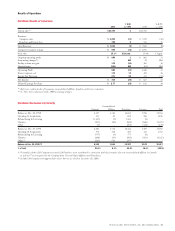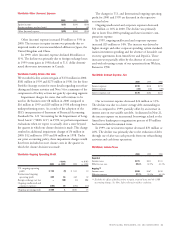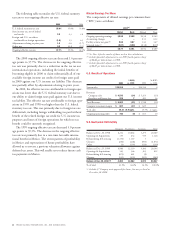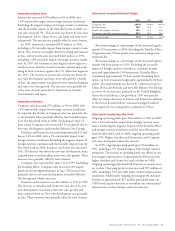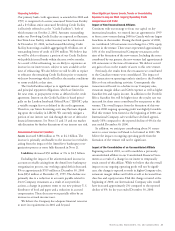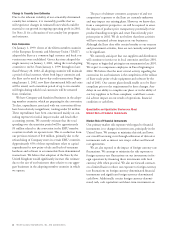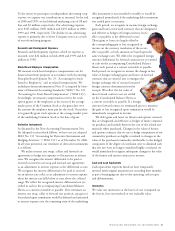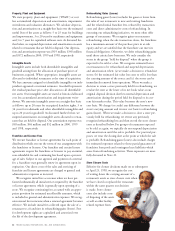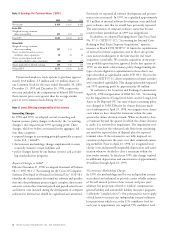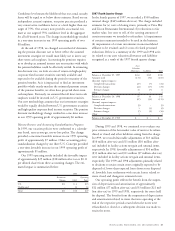Pizza Hut 2000 Annual Report Download - page 41
Download and view the complete annual report
Please find page 41 of the 2000 Pizza Hut annual report below. You can navigate through the pages in the report by either clicking on the pages listed below, or by using the keyword search tool below to find specific information within the annual report.TRICON GLOBAL RESTAURANTS, INC. AND SUBSIDIARIES 39
subject to tax considerations and local regulatory restrictions
which limit our ability to utilize these funds outside the
country in which they are held.
At December 30, 2000, a hypothetical 100 basis point
increase in short-term interest rates would result in a reduc-
tion of $19 million in annual income before income taxes.
The estimated reduction is based upon the unhedged portion
of our variable rate debt and assumes no change in the volume
or composition of debt at December 30, 2000. In addition,
the fair value of our interest rate derivative contracts would
decrease approximately $11 million in value to us, and the
fair value of our Senior Unsecured Notes would decrease
approximately $25 million. Fair value was determined by
discounting the projected cash flows.
New Accounting Pronouncement
See Note 2.
Cautionary Statements
From time to time, in both written reports and oral state-
ments, we present “forward-looking statements” within the
meaning of Section 27A of the Securities Act of 1933, as
amended, and Section 21E of the Securities Exchange Act of
1934, as amended. The statements include those identified by
such words as “may,” “will,” “expect,” “anticipate,” “believe,”
“plan” and other similar terminology. These “forward-looking
statements” reflect our current expectations and are based upon
data available at the time of the statements. Actual results
involve risks and uncertainties, including both those specific
to the Company and those specific to the industry, and could
differ materially from expectations.
Company risks and uncertainties include, but are not
limited to, potentially substantial tax contingencies related
to the Spin-off, which, if they occur, require us to indemnify
PepsiCo, Inc.; our substantial debt leverage and the attendant
potential restriction on our ability to borrow in the future, as
well as our substantial interest expense and principal repay-
ment obligations; our ability to replace or refinance the Credit
Facilities at reasonable rates; potential unfavorable variances
between estimated and actual liabilities including the liabili-
ties related to the sale of the non-core businesses; the ongoing
business viability of our key distributor of restaurant products
and equipment in the U.S. and our ability to ensure adequate
supply of restaurant products and equipment in our stores; our
ability to complete our Euro conversion plans or the ability of
our key suppliers to be Euro-compliant; the ongoing financial
viability of our franchisees and licensees, our potential inabil-
ity to identify qualified franchisees to purchase restaurants at
prices we consider appropriate under our strategy to reduce
the percentage of system units we operate; volatility of actu-
arially determined casualty loss estimates and adoption of
new or changes in accounting policies and practices.
Industry risks and uncertainties include, but are not limited
to, global and local business, economic and political condi-
tions; legislation and governmental regulation; competition;
success of operating initiatives and advertising and promo-
tional efforts; volatility of commodity costs and increases in
minimum wage and other operating costs; availability and
cost of land and construction; consumer preferences, spend-
ing patterns and demographic trends; political or economic
instability in local markets and currency exchange rates.


